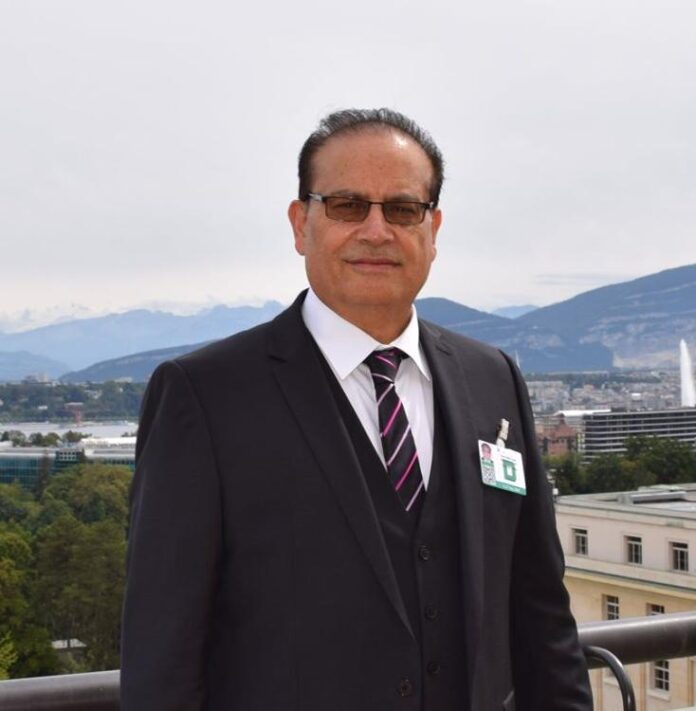Qamar Bashir
In a world where fashion has become the stage for bold experimentation, the lines between tradition and futurism are increasingly blurred. The Muslim silhouette—once marginalized in Western fashion shows—has now emerged as an icon of transformation and creativity.
Today, Muslims across the globe, especially those in fast-developing societies and diasporic communities in the West, are spearheading a revolution in the fashion world. They are no longer silent or sidelined. After years of facing Islamophobia and passive or active discrimination, they are asserting their identities with newfound confidence. Bold, intuitive, creative, and forward-looking, they are shattering the psychological barriers that once hindered their entry into high fashion.
We are witnessing the rise of a new aesthetic—one that preserves the modesty prescribed by Islam while embracing innovation, luxury, and diversity. Whether in the streets of Paris or the malls of Dubai, Muslim fashionistas are no longer apologetic about their religious values or sartorial traditions. Instead, they are redefining them, merging tradition with trend, and faith with flair.
This cultural shift in fashion is not merely symbolic—it has substantial economic implications as well. According to New York-based firm DinarStandard, global Muslim spending on Islamic fashion reached €300 billion in 2022 and is projected to grow significantly, hitting €402 billion by 2027. This growth trajectory, representing an annual increase of 6.1%, highlights that the Islamic fashion market is not just a fleeting trend but a sustainable and thriving segment that is reshaping the global fashion economy.
The 2023–2024 State of the Global Islamic Economy (SGIE) report underscores this seismic shift. The modest fashion industry, distinct from other sectors of the Islamic economy, is evaluated across four critical dimensions: financial performance, public awareness, social impact, and innovation. Significantly, governance plays a less central role in this sector, providing brands and designers with greater freedom and flexibility, thereby fueling creativity and rapid market evolution.
Several countries have emerged as critical players within this transformative landscape. Turkey, Malaysia, Indonesia, Singapore, and Italy have been particularly influential in shaping the modest fashion industry. On the consumer front, the strongest demand has consistently come from markets such as Iran, Turkey, Saudi Arabia, Pakistan, and Egypt. These nations not only represent significant consumer bases but are also increasingly influential in shaping global fashion trends.
Investment activity further validates the vibrancy and potential of this sector. Between 2022 and 2023, Islamic fashion attracted approximately €121.6 million in trade-related investments. The United Arab Emirates, Turkey, and Indonesia are leading the investment charge, acting both as substantial consumer markets and as proactive developers and exporters of Islamic fashion.
Innovations such as modest surfwear, garments designed to optimize vitamin D absorption, and practical water and windproof hijabs reflect the sector’s dynamism. Furthermore, trends like social commerce, clothing resale, and rentals to promote sustainability, alongside rising demand for specialized modest sportswear for women, represent exciting growth opportunities highlighted by the SGIE Report.
Meanwhile, the Organization of Islamic Cooperation (OIC) has seen ten of its member countries emerge as top importers of Islamic fashion. These include the UAE, Saudi Arabia, Turkey, Malaysia, Kazakhstan, Iraq, Indonesia, Qatar, Kyrgyzstan, and Kuwait. This proves that demand is not limited to Western Muslims or diaspora populations—it’s global, encompassing the heartlands of Islam and reaching well into Central Asia and beyond.
This surge is not merely economic or aesthetic; it is cultural and political. Muslim women and men are using fashion as a tool of empowerment and resistance. In the face of homogenizing global trends, they are reclaiming their narrative—showing that modesty does not preclude modernity, and faith does not hinder freedom of expression.
For years, Muslim attire was seen through a narrow lens—too traditional, too conservative, or simply incompatible with Western ideals of beauty and style. But today, hijabs are worn with high heels, abayas are tailored with futuristic silhouettes, and turbans grace the covers of fashion magazines. In an era that celebrates individuality, Muslims are proving that their style is not only relevant but revolutionary.
This transformation is driven in part by rising levels of education and purchasing power among Muslims—particularly in the Middle East and in Western societies. Today’s Muslim consumers are globally aware, digitally savvy, and eager to support brands that reflect their values. This has led to the emergence of Muslim-owned fashion labels, modest fashion weeks in major cities, and collaborations with international luxury brands.
What’s remarkable is that this fashion revolution is occurring without compromising on Islamic principles. Modesty remains central—but it is being reinterpreted through a modern lens. Flowy garments, layered designs, and elegant accessories are replacing outdated stereotypes. The result is a unique style that respects religious guidelines while pushing creative boundaries.
This also allows Muslims to engage confidently with the global fashion community, no longer needing to justify their beliefs or fashion choices. In fact, their designs are now inspiring non-Muslim audiences who seek stylish, ethical, and sustainable alternatives to mainstream fashion.
In the West, this has translated into broader social recognition. Islamic fashion is being integrated into mainstream runways, covered by global media, and appreciated in multicultural neighborhoods. This not only boosts the visibility of Muslims but also fosters greater understanding of Islamic culture in secular societies.
As Islamic fashion asserts itself as a pillar of the global economy, it paves the way for a new wave of stylistic diversity. It challenges long-held assumptions about beauty, femininity, and identity. More importantly, it tells a powerful story: one of resilience, creativity, and a refusal to be sidelined.
Fashion is no longer just about clothing—it’s about values, identity, and self-expression. The global Islamic fashion movement offers a glimpse into the future of style—one that fuses spirituality with sophistication, and heritage with high fashion—where tradition meets innovation, modesty meets modernity, and where Islam, far from being a constraint, becomes a canvas for elegance, creativity, and cultural pride.
Qamar Bashir
Press Secretary to the President (Rtd)
Former Press Minister at Embassy of Pakistan to France
Former MD, SRBC
Macomb, Detroit, Michigan

















